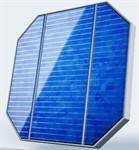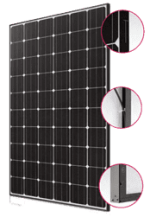How Are Solar Panels Produced?
The Production of Crystalline Solar Modules
A You do not have permission to view the full content of this post. Log in or register now. module consists of solar cells, glass, EVA, backsheet and frame. Learn more about the components and the process of manufacturing a solar panel.There are 3 You do not have permission to view the full content of this post. Log in or register now. available on the market:
- monocrystalline solar panels
- polycrystalline solar panels
- thin film solar panels
Step 1: Sand
It all starts with the raw material, which in our case is sand. Most You do not have permission to view the full content of this post. Log in or register now. are made of silicon, which is the main component in natural beach sand. Silicon is abundantly available, making it the second most available element on Earth. However, converting sand into high grade silicon comes at a high cost and is an energy intensive process. High-purity silicon is produced from quartz sand in an arc furnace at very high temperatures.Step 2: Ingots
The silicon is collected, usually in the form of solid rocks. Hundreds of these rocks are being melted together at very high temperatures in order to form ingots in the shape of a cylinder. To reach the desired shape, a steel, cylindrical furnace is used. In the process of melting, attention is given so that all atoms are perfectly aligned in the desired structure and orientation. Boron is added to the process, which will give the silicone positive electrical polarity.Mono crystalline cells are manufactured from a single crystal of silicon. Mono Silicon has higher efficiency in converting solar energy into electricity, therefore the price of monocrystalline panels is higher.

Polysilicone cells are made from melting several silicon crystals together. You can recognise them by the shattered glass look given by the different silicon crystals. After the ingot has cooled down, grinding and polishing are being performed, leaving the ingot with flat sides.
Step 3: Wafers
Wafers represent the next step in the manufacturing process. The silicon ingot is sliced into thin disks, also called wafers. A wire saw is used for precision cutting. The thinness of the wafer is similar to that of a piece of paper.Because pure silicon is shiny, it can reflect the sunlight. To reduce the amount of sunlight lost, an anti-reflective coating is put on the silicon wafer.
Step 4: Solar cells
The following processes will convert a wafer into a solar cell capable of converting solar power into electricity.
Each of the wafers is being treated and metal conductors are added on each surface. The conductors give the wafer a grid-like matrix on the surface. This will ensure the conversion of solar energy into electricity. The coating will facilitate the absorption of sunlight, rather than reflecting it.
In an oven-like chamber, phosphorous is being diffused in a thin layer over the surface of the wafers. This will charge the surface with a negative electrical orientation. The combination of boron and phosphorous will give the positive - negative junction, which is critical for the proper function of the PV cell.
Step 5: From Solar Cell to Solar Panel
The solar cells are soldered together, using metal connectors to link the cells. Solar panels are made of solar cells integrated together in a matrix-like structure. The current standard offering in the market are:- 48 cell panels - suitable for small residential roofs.
- 60-cell panels - this is the standard size.
- 72-cell panels -used for large-scale installations.

After the cells are put together, a thin layer (about 6-7 mm) of glass is added on the front side, facing the sun. The backsheet is made from highly durable, polymer-based material. This will prevent water, soil, and other materials from entering the panel from the back. Subsequently, the junction box is added, in order to enable connections inside the module.
It all comes together once the frame is assembled. The frame will also provide protection against impact and weather. The use of a frame will also allow the mounting of the panel in a variety of ways, for example with mounting clamps.
EVA (ethylene vinyl acetate) is the glue that binds everything together. It is very important that the quality of the encapsulant is high so it doesn't damage the cells under harsh weather conditions.
Step 6: Testing the Modules
Once the module is ready, testing is carried out to ensure the cells perform as expected. STC (Standard Test Conditions) are used as a reference point. The panel is put in a flash tester at the manufacturing facility. The tester will deliver the equivalent of 1000W/m2 irradiance, 25°C cell temperature and an air mass of 1.5g. Electrical parameters are written down and you can find these results on the technical specification sheet of every panel. The ratings will reveal the power output, efficiency, voltage, current, impact and temperature tolerance.Apart from STC, every manufacturer uses NOCT (nominal operating cell temperature). The parameters used are more close to ‘real life’ scenario: open-circuit module operation temperature at 800W/m2 irradiance, 20°C ambient temperature, 1m/s wind speed. Again, the ratings of NOCT can be found on the technical specification sheet.
Cleaning and inspection are the final steps of the production before the module is ready to be shipped to homes or businesses.
Research and development in the solar energy industry is aiming at reducing the You do not have permission to view the full content of this post. Log in or register now. and increasing efficiency. The solar panel manufacturing industry is becoming more competitive and is forecasted to become more popular than conventional sources of energy, such as fossil fuels.
Attachments
-
You do not have permission to view the full content of this post. Log in or register now.